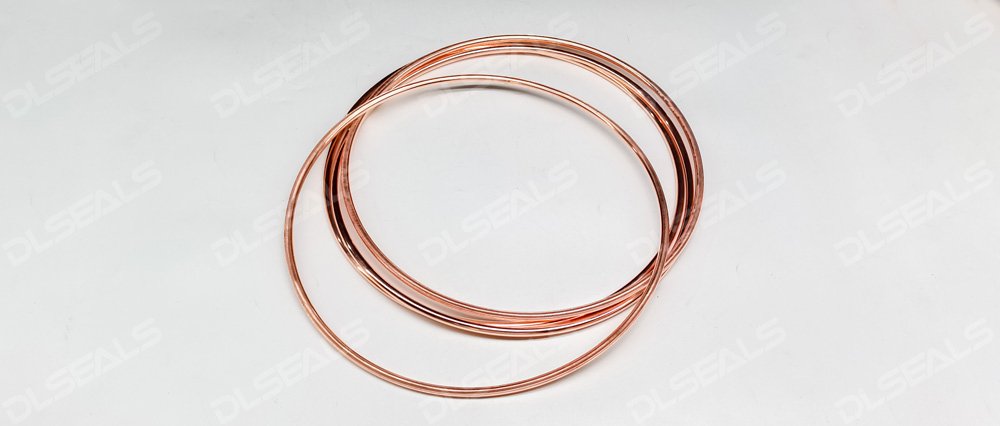News
A2024-02-05

In the industrial field, copper alloy O-rings are an important sealing component with excellent thermal conductivity and corrosion resistance. However, due to various factors, O-rings may fail during use. This article will provide an in-depth analysis of the failure causes of copper alloy O-rings and propose effective preventive measures to ensure their long-term and stable sealing performance.
Failure cause analysis
Aging and hardening: Copper alloy O-rings may age and harden in long-term high-temperature and high-pressure working environments, resulting in weakened elasticity and reduced sealing performance.
Chemical corrosion: Corrosive media exist in some industrial environments. When copper alloy O-rings are exposed to corrosive substances for a long time, chemical corrosion may occur, resulting in damage to the surface of the sealing ring.
Over-squeezing or over-stretching: Over-squeezing or over-stretching the O-ring during installation may cause it to deform, reduce the sealing performance, and even cause the sealing ring to break.
Temperature fluctuations: A sealing environment that experiences temperature fluctuations for a long time may cause fatigue of the sealing ring material, thereby affecting its elasticity and sealing effect.
Precaution
Select appropriate materials: According to the characteristics of the working environment, select high-temperature and corrosion-resistant copper alloy materials, and ensure that they comply with relevant standards and specifications.
Regular replacement: The copper alloy O-ring seal has a limited service life. Regular replacement is an effective means to prevent aging and hardening, especially under high temperature and high pressure conditions.
Anti-corrosion treatment: For situations where there may be contact with corrosive media, anti-corrosion treatment can be carried out, such as coating an anti-corrosion layer or selecting a copper alloy material with anti-corrosion properties.
Control the installation strength: During the installation process, control the squeezing and stretching strength to avoid excessive deformation and ensure that the O-ring seal maintains appropriate elasticity during work.
Stable working environment: Minimize temperature fluctuations in the working environment and slow down the fatigue process of sealing ring materials by maintaining stable working conditions.
Application areas and precautions
Hydraulic system: Copper alloy O-rings are often used in hydraulic systems to ensure the sealing performance of the system, but attention must be paid to the chemical properties and temperature conditions of the medium when using them.
Automobile industry: In the automotive field, copper alloy O-rings are used in key parts such as engines and transmissions, and should be inspected and replaced regularly to ensure the normal operation of the car.
Aerospace: In the aerospace field, sealing performance requirements are extremely high. Select suitable copper alloy O-ring seals and consider possible working environment factors in the design.
in conclusion
Copper alloy O-rings play an important sealing role in industrial applications, but you need to pay attention to possible causes of failure during use. By selecting appropriate materials, regular replacement, anti-corrosion treatment and other preventive measures, the service life and sealing performance of the O-ring can be effectively improved to ensure its reliable application in various fields.
[DLSEALS kindly Reminder] Sealing issues? Turn to DLSEALS! As a sealing component manufacturer, we specialize in customizing sealing components, providing a full range of services from design, research and development, production, testing, and more. If you have more information you'd like to know, feel free to contact us directly. DLSEALS's product experts are dedicated to serving you!